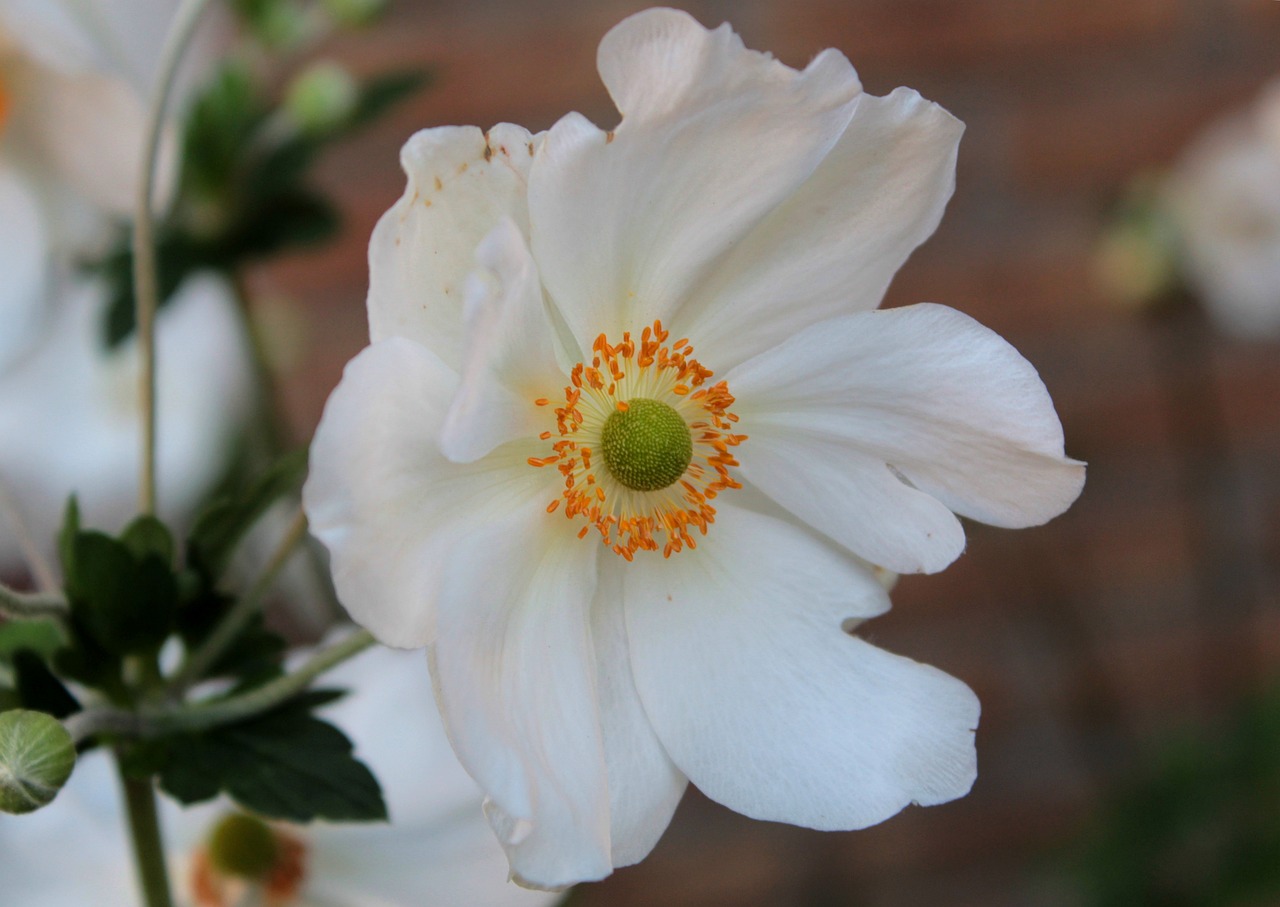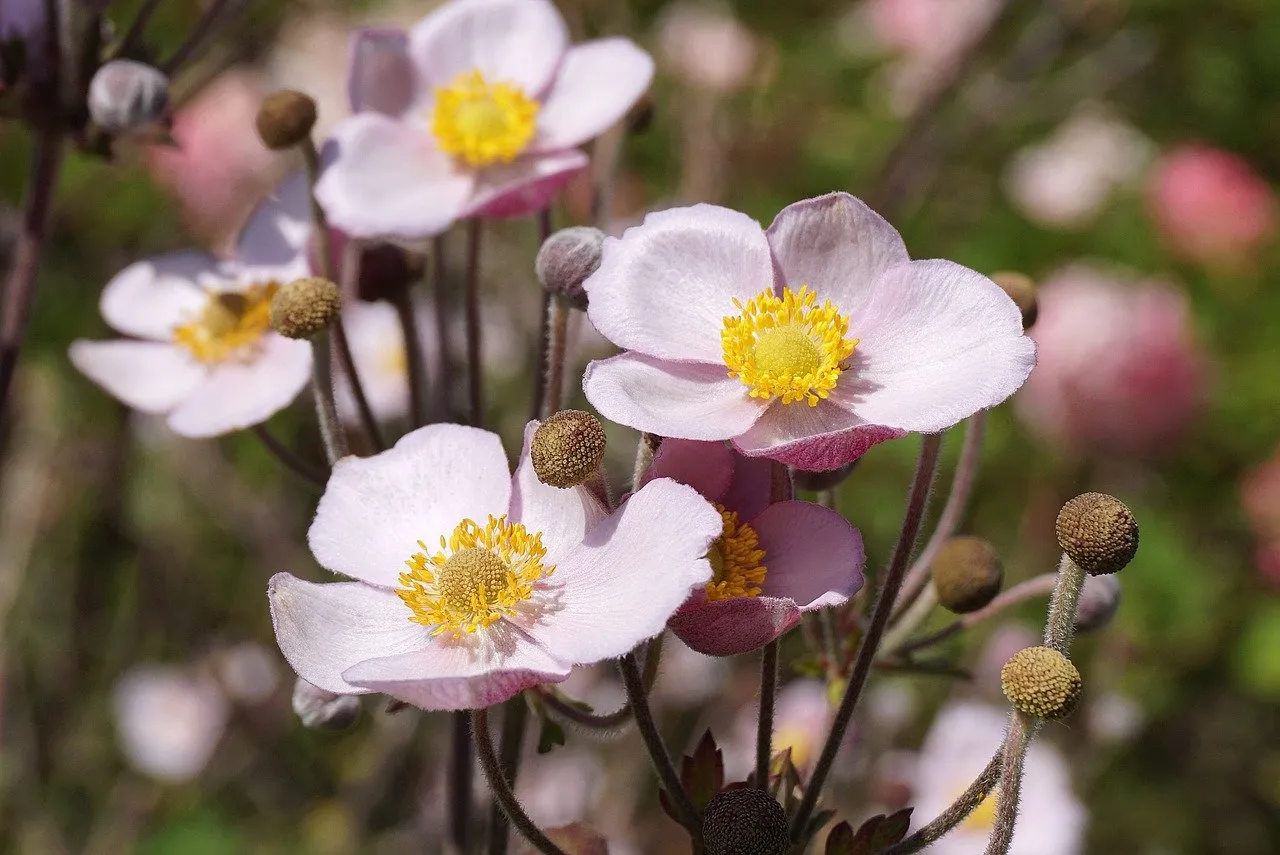Hi @weered
Thanks for your question about growing Anemones. Anemones, once established, are bulletproof and fast-growing/spreading herbaceous perennials that can cope with plenty of abuse and neglect.
The first thing to say is that they're going to take a good six months to establish and won't be at full height or full flower this year, especially not from 9cm pots. So don't panic!

Feeding young plants is unnecessary and just wastes money, so I wouldn't bother with that either.
How long do new young plants take to establish?
The time it takes for new herbaceous perennials to establish and grow to their full height can vary widely, influenced by factors such as the specific plant species, local growing conditions, and care provided. Different herbaceous perennial species exhibit varying growth rates, with some reaching maturity within one or two growing seasons while others may take several years.
For most plants, you need at least 6 months before they start to develop and spread.
Essential elements include ideal conditions such as adequate sunlight, well-draining soil, and appropriate moisture levels, as well as the initial size of the plant when purchased or transplanted. Climate, maintenance practices, local soil quality, and weather conditions also contribute to the timeline.
Generally, many herbaceous perennials establish and grow a significant portion of their mature height within the first year or two, but it can take several years for them to reach their full height and realize their maximum size and flowering potential. Root development and establishment are crucial in the initial stages, with continued growth and beautiful displays evolving over time with proper care and favourable conditions.
How to look after Japanese Anemones
Japanese Anemones (Anemone hupehensis), also known as windflowers, are lovely perennial plants known for their delicate, daisy-like flowers and elegant, tall stems. They can be a wonderful addition to your garden, and taking care of them is relatively straightforward. Here's how to look after Japanese Anemones:
1. Planting:
Choose a well-draining location with partial to full shade. While they can tolerate some sunlight, they thrive in dappled shade or areas with morning sun and afternoon shade.
Ensure the soil is fertile and rich in organic matter. Japanese Anemones prefer slightly acidic to neutral soil.
2. Watering:
Keep the soil moist but not waterlogged once you've initially planted them. Regular watering is essential to establish healthy root systems but once established Anemones will tolerant drought and abuse!

3. Mulching:
Apply a layer of mulch around the base of the plants to help retain soil moisture, suppress weeds, and regulate soil temperature. Mulching also mimics their natural forest-floor habitat.
4. Pruning:
Prune dead or spent flowers to encourage continuous blooming and prevent self-seeding if desired. Cut back the spent flower stalks to the base of the plant.
In late winter or early spring, cut back the entire plant to the ground to encourage fresh, new growth.
5. Fertilizing:
In early spring, apply a balanced, slow-release fertilizer to provide nutrients for the upcoming growing season. Follow the package instructions for proper application rates. Though they are so hardy and vigorous you probably won't ever need to feed them!
https://youtu.be/5BhGtCjT2TQ
6. Division:
Every few years, consider dividing Japanese Anemones to rejuvenate the plant and prevent overcrowding. Divide in the spring or early fall when the plant is dormant.
7. Pests and Diseases:
Japanese Anemones are relatively resistant to pests and diseases. However, keep an eye out for common garden pests like aphids and slugs. Treat infestations promptly if they occur.
8. Winter Care:
In colder climates, Japanese Anemones can be susceptible to frost heave. Apply a layer of mulch over the root zone in late fall to help protect the plant during winter.
9. Support:
Tall varieties of Japanese Anemones may benefit from staking or other forms of support to prevent bending or flopping over, especially when they are in bloom.
I hope that helps?
Lee
Hi @weered
Thanks for your question about growing Anemones. Anemones, once established, are bulletproof and fast-growing/spreading herbaceous perennials that can cope with plenty of abuse and neglect.
The first thing to say is that they're going to take a good six months to establish and won't be at full height or full flower this year, especially not from 9cm pots. So don't panic!

Feeding young plants is unnecessary and just wastes money, so I wouldn't bother with that either.
How long do new young plants take to establish?
The time it takes for new herbaceous perennials to establish and grow to their full height can vary widely, influenced by factors such as the specific plant species, local growing conditions, and care provided. Different herbaceous perennial species exhibit varying growth rates, with some reaching maturity within one or two growing seasons while others may take several years.
For most plants, you need at least 6 months before they start to develop and spread.
Essential elements include ideal conditions such as adequate sunlight, well-draining soil, and appropriate moisture levels, as well as the initial size of the plant when purchased or transplanted. Climate, maintenance practices, local soil quality, and weather conditions also contribute to the timeline.
Generally, many herbaceous perennials establish and grow a significant portion of their mature height within the first year or two, but it can take several years for them to reach their full height and realize their maximum size and flowering potential. Root development and establishment are crucial in the initial stages, with continued growth and beautiful displays evolving over time with proper care and favourable conditions.
How to look after Japanese Anemones
Japanese Anemones (Anemone hupehensis), also known as windflowers, are lovely perennial plants known for their delicate, daisy-like flowers and elegant, tall stems. They can be a wonderful addition to your garden, and taking care of them is relatively straightforward. Here's how to look after Japanese Anemones:
1. Planting:
Choose a well-draining location with partial to full shade. While they can tolerate some sunlight, they thrive in dappled shade or areas with morning sun and afternoon shade.
Ensure the soil is fertile and rich in organic matter. Japanese Anemones prefer slightly acidic to neutral soil.
2. Watering:
Keep the soil moist but not waterlogged once you've initially planted them. Regular watering is essential to establish healthy root systems but once established Anemones will tolerant drought and abuse!

3. Mulching:
Apply a layer of mulch around the base of the plants to help retain soil moisture, suppress weeds, and regulate soil temperature. Mulching also mimics their natural forest-floor habitat.
4. Pruning:
Prune dead or spent flowers to encourage continuous blooming and prevent self-seeding if desired. Cut back the spent flower stalks to the base of the plant.
In late winter or early spring, cut back the entire plant to the ground to encourage fresh, new growth.
5. Fertilizing:
In early spring, apply a balanced, slow-release fertilizer to provide nutrients for the upcoming growing season. Follow the package instructions for proper application rates. Though they are so hardy and vigorous you probably won't ever need to feed them!
6. Division:
Every few years, consider dividing Japanese Anemones to rejuvenate the plant and prevent overcrowding. Divide in the spring or early fall when the plant is dormant.
7. Pests and Diseases:
Japanese Anemones are relatively resistant to pests and diseases. However, keep an eye out for common garden pests like aphids and slugs. Treat infestations promptly if they occur.
8. Winter Care:
In colder climates, Japanese Anemones can be susceptible to frost heave. Apply a layer of mulch over the root zone in late fall to help protect the plant during winter.
9. Support:
Tall varieties of Japanese Anemones may benefit from staking or other forms of support to prevent bending or flopping over, especially when they are in bloom.
I hope that helps?
Lee



